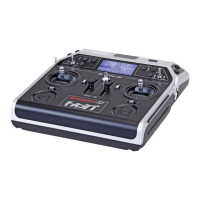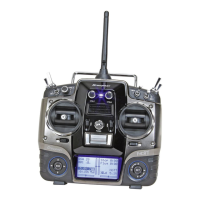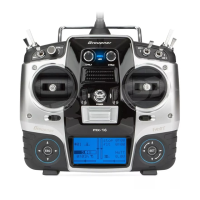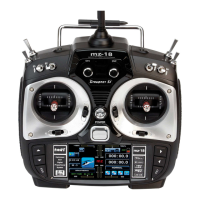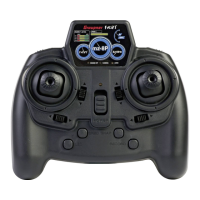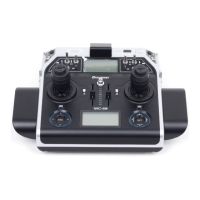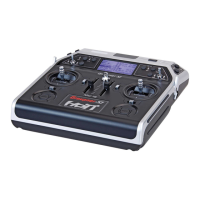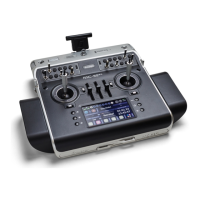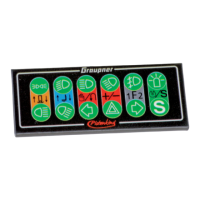195
Detail program description - Free mixers
Example:
Two mixers (MIX 6 ¼ 7 and 7 ¼ 8):
a) WITHOUT series switching:
6 6
7
Servo
4,8 V
C 577
Best.-Nr. 41 01
Servo
4,8 V
C 577
Best.-Nr. 41 01
7
8
Servo
4,8 V
C 577
Best.-Nr. 41 01
MIX 1
MIX 2
b) The same mixers WITH series switching:
6 6
7
Servo
4,8 V
C 577
Best.-Nr. 41 01
Servo
4,8 V
C 577
Best.-Nr. 41 01
7
8
Servo
4,8 V
C 577
Best.-Nr. 41 01
MIX 1
MIX 2
In this highly simplifi ed example, if mixer 2 is
switched in series, then it does not "take over" solely
the transmitter signal of control function 7 – as shown
under a) – but, instead, the entire (mixed) signal
present at the servo side of control channel 7, as
shown under b). It then directs this in accordance
with its confi gured mixer ratio forwards to control
channel 8. In this case, the effect of transmitter
control "6" extends as far as output "8". This kind of
serial linkage can be extended as far as you wish.
For example, another mixer "8 ¼ 12" can be used
to route the control signal from "6" as far as output
"12", taking into consideration the associated mixer
ratios. Of course, even with an active serial link,
each separate mixer can still be controlled via the
transmitter control assigned to the mixer input. Fixed-
wing and helicopter mixers also work in the same
way, when set up to switch "in sequence".
Including phase trim
If you wish to apply the FLAP channel ("6") or FLAP2
channel ("9") trim values stored in the »Phase trim«"
menu – fl ight phase dependent – then fi rst tap the
center
SET key of the right touch pad and use its
selection keys to select "P":
11
LinearMIX 1
type
6
from – Begr. +
??
??
??
??
??
??
––––
LinearMIX 2
LinearMIX 3
LinearMIX 4
LinearMIX 5
to
Adjust
Tr
––––
––––
??
??
––––
P
Depending on the mixer value confi gured, a mixer
can, as shown in the example above, route the signal
from a fl ap control present (e.g.) on input 6 to control
channel 11, while also applying the FLAP trim value
set on the »Phase trim« menu (page 150) for the
respective fl ight phase.
Other special features of free mixers
Mixer input = mixer output
If you set up a mixer whose input is the same as
its output, e.g. "C1 ¼ C1", you can achieve some
very special effects in conjunction with the option of
switching a free mixer on and off in any way you like.
A typical application of this can be found at the end of
this section, as Example 2 on page 202.
Tip:
If you separate a control function, e.g. "9", from
control channel 9" using the »MIX-only channel«
menu (see page 205), then servo response is
defi ned only by the mixer ratio (yet to be specifi ed)
The effect of the C1 trim wheel on mixer output will
depend on the function assigned in the »Model type«
menu (page 94), in the "Motor on C1" column for
fi xed-wing models …
Trim Effect on mixer output
None linear over full trim wheel travel
Forward Only effective if C1 stick is forward
Back Only effective if C1 stick is back
… or on the "Pitch" line of the »Stick mode« menu
for helicopter models:
Trim Effect on mixer output
AR
(Thr-AR)
linear over full trim wheel travel
TL
(throttle
limit)
only effective at minimum position of
the assigned throttle limit control (the
right side proportional rotary control as
standard)
Switching mixers in series
As already explained on page 192, you can also
switch mixers in series: Where mixers are switched
in "sequence", the "input signal" of a control channel
already on its way to the servo "branches off" and
is directed to a further channel. In the "ty" column,
select the right angle bracket "
" or "Tr ", if the trim
should also act simultaneously on the mixer input:
7
LinearMIX 1
type
6
from – Begr. +
8
7
??
??
??
??
??
??
––––
LinearMIX 2
LinearMIX 3
LinearMIX 4
LinearMIX 5
to
Adjust
Tr
––––
––––
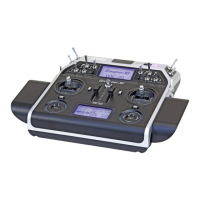
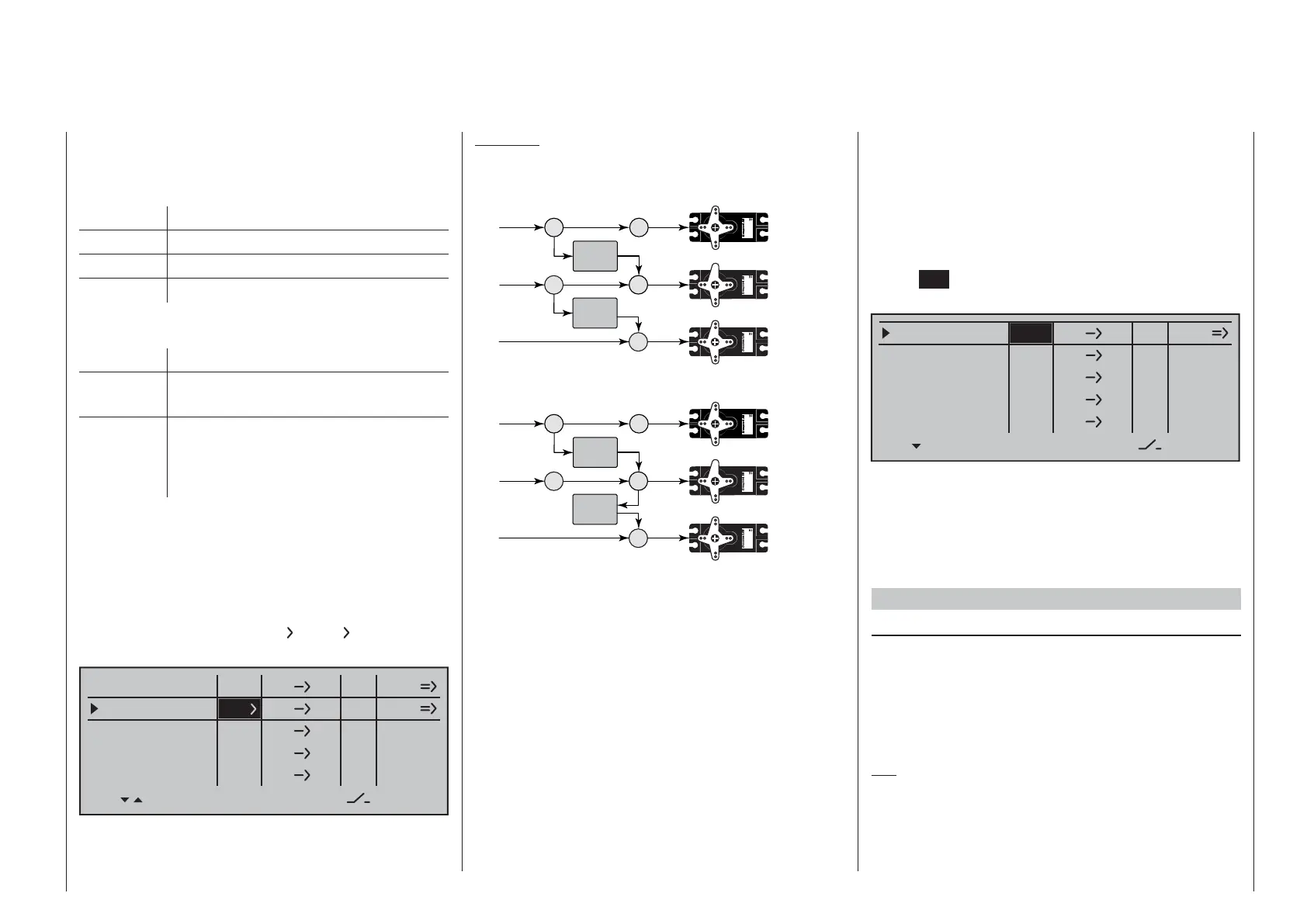